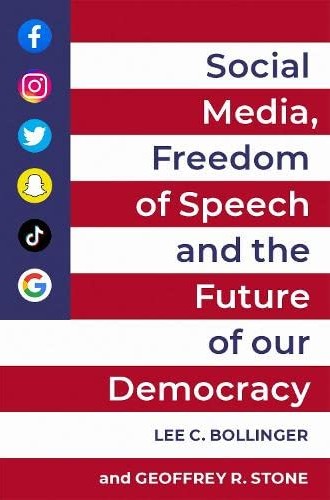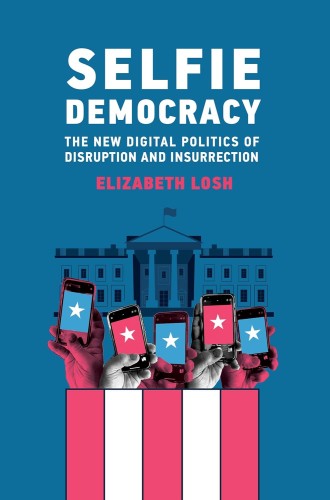Can democracy survive social media?
Two new books offer critiques and solutions that aim to recalibrate digital politics toward the common good.
It is no secret that politics have gone digital. Most of us get at least some of our news about politics online, and many of us follow politicians on social media platforms. We may express our views by commenting on public officials’ social media posts or tagging them in our own posts. Political activists circulate online petitions and organize rallies and protests through hashtags. Campaigns use social media to promote candidates and to recruit volunteers for canvassing, phone banking, and, more recently, text banking.
The internet can be a potent force for democracy, drawing more people into active citizenship, providing new avenues for amplifying their voices, and increasing their participation in the political systems that affect their lives. But the digitization of political life can also threaten democracy, a threat most palpably manifested in the January 6 attack on the US Capitol. Social Media, Freedom of Speech, and the Future of Our Democracy and Selfie Democracy are two recent books that aim to diagnose the ways that digitized democracy degrades American political institutions and to offer critiques and solutions that could recalibrate digital politics toward the common good.
Read our latest issue or browse back issues.
Both books name and discuss an array of challenges wrought by our emergent era of digital democracy: the illusion of direct access to candidates and elected officials, the spread of fake news and disinformation campaigns, the effects of amoral algorithms designed to amplify content that keeps people glued to their screens regardless of the content’s accuracy, and the ways social media algorithms influence people’s worldviews and moral agency. Both books are worth reading for anyone concerned with how internet usage is reshaping our personal and collective identities, increasing political polarization, radicalizing Americans toward political violence, and eroding trust in democratic institutions.
Lee Bollinger and Geoffrey Stone deal primarily with the legal challenges that arise when addressing the individual and societal harm caused by social media. Bollinger, a legal scholar with particular expertise in the First Amendment, is president of Columbia University, and Stone is on the faculty of the University of Chicago Law School. The editors’ expertise in American jurisprudence sets the focus of this edited volume, which wrestles with how to navigate the American legal tradition of freedom of speech and expression in the relatively new digital contexts that have arisen through social media. Of the book’s 31 contributors, 27 have degrees in law and either practice law, work as law school faculty, or currently serve or have served as elected officials. The volume is an excellent resource for those who want to get a handle on legal issues, particularly with regard to the First Amendment, that govern social media. For legal scholars or law students interested in the pressure that digitized democracy is putting on civil liberties, the book is a must-read.
The essays are also generally readable for a nonlawyer (like myself), though they can be repetitive at times as multiple authors seek to outline similar problems and challenges. I would advise readers to pick and choose specific essays that appeal to their interests and read those first. I found three essays especially interesting for my own understanding of the problems social media presents for democracy and what it might take to fix them. David A. Strauss’s essay, “Social Media and First Amendment Fault Lines,” is a helpful primer on what is at stake in terms of free speech as we consider the regulation of social media.
Second, Larry Kramer’s “A Deliberate Leap in the Opposite Direction: The Need to Rethink Free Speech” is a fascinating and provocative essay. Kramer contends that “qualitative changes of the sort we have experienced in the underlying structure of our information environment call for, indeed, necessitate, a similar qualitative rethinking of the law, rights, and norms of free speech that structure it.” Kramer’s argument is ultimately an appeal for the regulation of social media on the basis of ethics. Social media companies, he writes
are able to do something news and information services in the pre-internet period could not, viz., gather detailed information on the potential interests of billions of people and use it to feed them material that draws their attention, whether desired or not. And because the platforms can do this, we seem impelled to concede that they should be permitted to do so.
But why concede that? Why let these for-profit entities freely operate in a fashion that is wreaking havoc on our public discourse and democracy’s future?
In addition to asking questions about the legality of social media regulation, Kramer reflects on the complex ethical terrain of the relationship between those of us who use social media and the companies who profit from it.
Finally, Renée Diresta’s “Algorithms, Affordances, and Agency” should be required reading for anyone who wants to gain a clearer understanding of how social media has both empowered and manipulated people, and how it has both strengthened and eroded democratic agency. The seemingly contradictory impacts on human agency of our digitized politics have developed over decades. “Today, information moves by way of a system of algorithms and affordances and a historically unprecedented degree of agency” in which “ordinary people” create and spread content online. At the same time, “automated curators” (i.e., algorithms) present “a more opaque force in communications technology.” For Diresta, the relationship between the human agents who create and spread content and the algorithms that amplify that content has “transformed speech and community.”
Elizabeth Losh teaches English and American studies at William and Mary. In Selfie Democracy, she dives deeply into the ways that Barack Obama and Donald Trump leveraged digital technology (including social media) in their campaigns and administrations to promote what she calls their rhetoric of connection, transparency, participation, and access. Losh analyzes a broader swath of issues pertaining to digital politics than Bollinger and Stone deal with, although in the narrower context of presidential politics.
For example, Losh discusses the politicization of President Obama’s BlackBerry use and the successes and failures of his administration’s proliferation of new “dot gov” websites that solicited feedback from ordinary citizens, ostensibly to increase direct participation in government. She also unpacks Hillary Clinton’s digital illiteracy, including how it may have contributed to the email server scandal that played a role in her 2016 loss. By looking at a complex “repertoire of digital practices,” including but not limited to social media use, Losh reveals “the unintended consequences of wireless technologies on political leadership” and demonstrates “how seemingly benign mobile devices that hold out the promise of direct democracy undermine representative forms of government.”
Both books address an important debate around what, if anything, should be done with Section 230 of the Communications Decency Act. Presently, Section 230 shields social media companies from liability for content posted on their platforms. Losh describes the call for the repeal of Section 230 as primarily emerging from President Trump and other Republican officials who have seen social media companies as censoring conservative views. “Before Section 230,” she writes, “any kind of content moderation provided by these platforms could be interpreted as accepting responsibility for absolutely everything posted on their sites. Repealing Section 230,” therefore, would “dissuade platforms from moderating content.” In other words, Trump and other social conservatives see Section 230 as allowing social media companies to remove speech they dislike. Repealing Section 230 would remove social media companies’ liability shield and “place them in legal jeopardy with costly lawsuits.”
But conservatives are not the only voices questioning Section 230. In his essay in the Bollinger and Stone book, Rhode Island senator Sheldon Whitehouse advocates for reforming the law to ease the spread of misinformation. He warns that a full repeal of Section 230 could simply cause new problems without solving old ones. For example, simply eliminating Section 230 is unlikely to stop the spread of misinformation, since much misinformation is not “legally actionable.” It is not illegal to lie or to spread falsehoods, so it is unlikely that any litigation attempted against social media companies after a repeal of Section 230 would be successful on these grounds. When the object of misinformation is “to pollute the general information environment with lies, rather than to harass or slander an identified individual or company” (unlike, for instance, the parents of Sandy Hook massacre victims who successfully sued Alex Jones) it is quite difficult to identify “a proper plaintiff” or to “establish causation between the misinformation and the harm.” Instead of repeal, Whitehouse favors reforms of Section 230 including a variety of transparency regulations and requiring “platforms to internalize the costs imposed by their algorithms, instead of solely reaping the profits.” In this way, he suggests that if social media algorithms cause demonstrable harm, a reformed Section 230 could hold them accountable for that harm.
As American political life is increasingly both polarized and digitized, the work of scholars like Losh, Bollinger, and Stone becomes critical to help us understand the relationship between these two forces. Their books may be more suited to fellow academics than to a general audience, but for those of us who want to help form responsible digital citizens and are committed to quality civic discourse, both are helpful resources.







